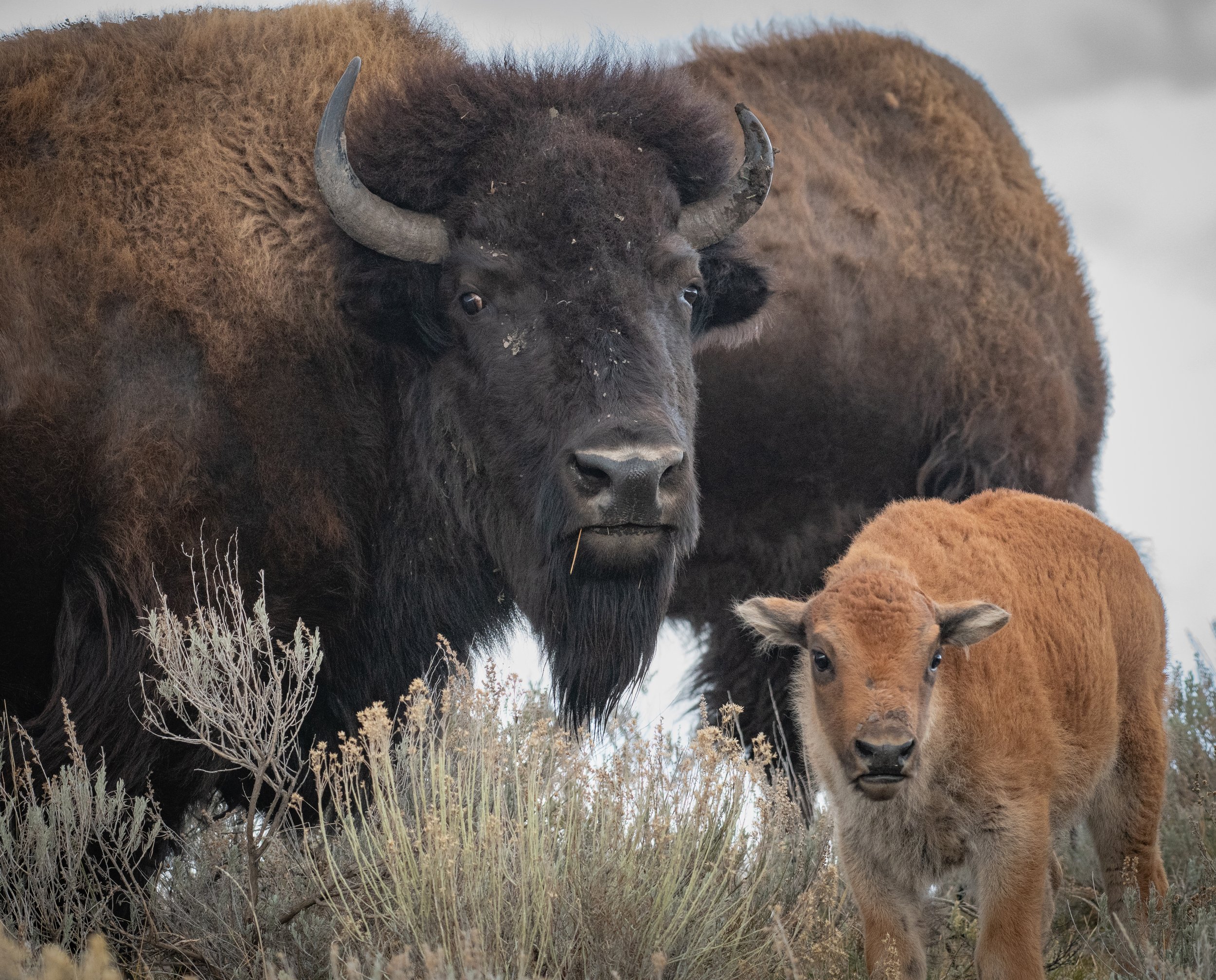Critter of the Month: Bison
They’re wild, woolly and wonderful! They are bison, the largest land animal in North America. And thankfully they’re once again roaming their historic homes on the range throughout the west.
The near extinction of the bison, a western icon
The history of the bison is a story of staggering greed and exploitation. Once roaming in seemingly endless numbers of 30 million or more, bison were the symbol of the abundance catalyzing westward expansion in the United States. Arriving hunters quickly targeted bison herds as bountiful resources, decimating them through unchecked slaughter. Government hunters also targeted bison as part of an effort to subjugate Native American tribes who depended on them. By the late 1800s fewer than 1,000 individuals remained.
Fortunately, as the bison population plummeted, a few people recognized the dire situation and stepped in to save them from extinction. Most notably, President Teddy Roosevelt promoted efforts to save them through breeding at the Bronx Zoo and returning animals to the wild.
Despite their bulk, bison are quick and can outrun a horse.
Recovering the bison
As science has shed more light on the benefits of bison to the ecosystem, recovery efforts continue to grow. We now know that the loss of bison herds are responsible for lasting, harmful impacts on the plains. Without millions of hooves tilling the soil and droppings adding fertility, both plant and animal communities of the grasslands have been significantly altered.
Today bison number about 380,000 in the U.S. Most of these animals are on private ranches where they are bred for a thriving commercial meat industry. But there are also many efforts restoring wild bison as free-living herds. About 11,000 are on public lands, including the largest herd in Yellowstone National Park. Partnerships among zoos, tribes, non-profit organizations, and government agencies are restoring then on tribal and other lands managed for wildlife. Studies show that the renewed presence of bison on the prairies is having a positive influence on the health of the grasslands and its plant and animal residents.
Bison calves are born reddish-brown, earning the nickname “red dog.” They stand immediately after birth and can run within hours.
Young bison spar to build social bonds and gain skills for important breeding battles to come.
Where can I see bison?
Bison are fascinating and entertaining creatures to spend time with. These photos are from the Grand Tetons during an afternoon I spent parked on a back road among the herd. Watching interactions between mothers and young, sparring teenage bison, males courting females, and just enjoying them peacefully munching grass was a pretty great way to get to know these charming animals and reflect on the dedication of conservations who stepped in to save them in the nick of time.
Herds in Yellowstone and Grand Teton National Parks are quite acclimated to people and vehicles, often crossing roads and approaching close to cars. Don’t be fooled, though, as bison regularly charge and injure park visitors who approach these powerful wild animals too closely. You can also see bison herds at the National Bison Range in Montana and Teddy Roosevelt National Park in North Dakota, as well as other sites across the plains states. For a unique, close-up visit with bison, join a tour at Northwest Trek Wildlife Park in Eatonville, Washington.
Bison Likes: Bison LOVE company and hang out in fluid, female-led herds ranging from dozens to hundreds of animals depending on the season.
Bison Dislikes: Biting bugs! To fend off insect pests, bison roll in wallows to gain a protective, muddy coat.
Bison Super Power: Surviving the winter. On the Great Plains, temperatures plummet and snow drifts are deep. Bison cope with the cold thanks to their dense and woolly fur. To find food, bison sweep their giant heads through the snow, plowing a path to the grasses below.






